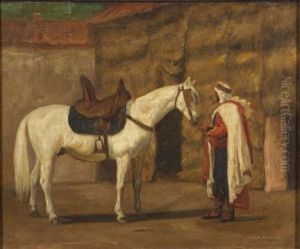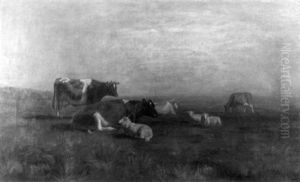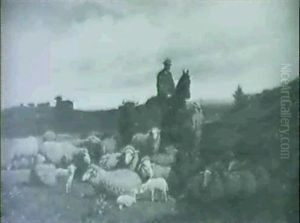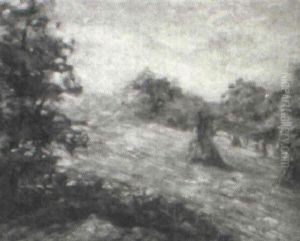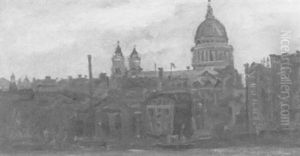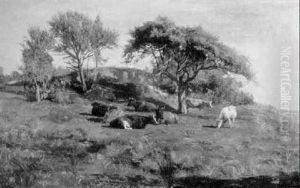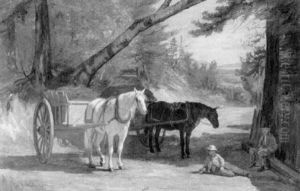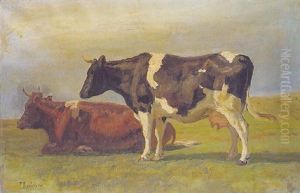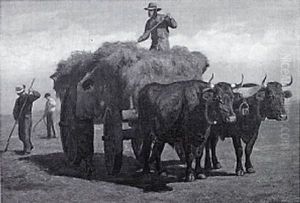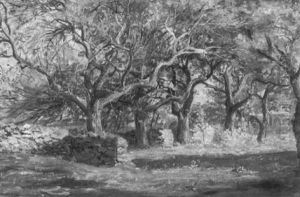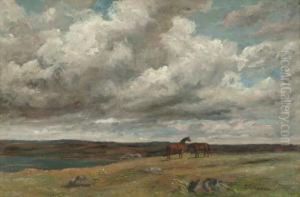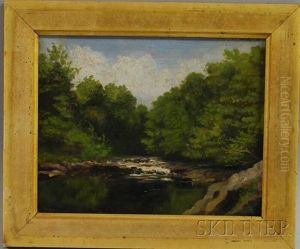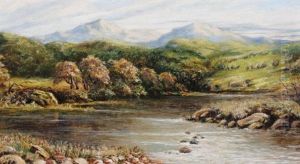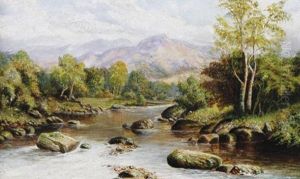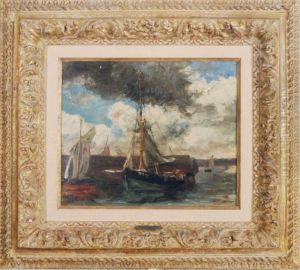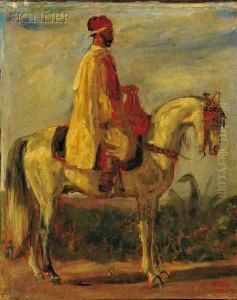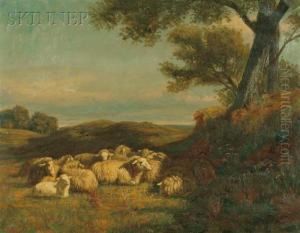Thomas Harris Robinson Paintings
Thomas Harris Robinson was an English painter born in the 19th century, specifically on June 29, 1834, in the town of Leighton Buzzard, Bedfordshire, England. He was known for his genre paintings, landscapes, and historical scenes. Although not as widely recognized as some of his contemporaries, Robinson's work provides insight into the artistic styles and cultural preoccupations of Victorian England.
As a young man, Robinson demonstrated a talent for art and pursued his passion by enrolling at the Royal Academy Schools in London, where he studied under the guidance of esteemed artists of the time. His education there shaped his technical skills and artistic sensibilities, preparing him for a career as a professional painter. Robinson began exhibiting his works at the Royal Academy from 1853 onwards, and his pieces were also shown at the British Institution and the Society of British Artists, indicating a degree of success and acceptance within the artistic community.
Robinson's paintings often depicted scenes from everyday life, including rural settings and domestic interiors, which were popular subjects during the Victorian era. His work is characterized by keen observation, detailed representation, and a certain sentimental quality that resonated with the tastes of the middle-class audience of his time. Robinson's ability to capture the nuances of light and his skillful rendering of textures were notable features of his painting style.
Despite his talent, Thomas Harris Robinson did not achieve the same level of fame as some of his peers. Nevertheless, his paintings were well-regarded by those who appreciated the genre, and he was able to establish a reputation as a skilled painter of his genre. He lived during a period when the art world was undergoing significant changes, with the rise of movements like Impressionism beginning to challenge the traditional academic styles that Robinson had been trained in.
Thomas Harris Robinson's life was relatively short; he passed away on November 6, 1888, in Kensington, London. His paintings continue to be of interest to art historians and collectors who study the Victorian era, as they offer a window into the cultural and social dynamics of the time. His works are part of various art collections and occasionally appear at auction, where they are appreciated for their historical value and artistic merit. Robinson's contributions to Victorian art may not have placed him among the pantheon of greats, but they solidify his place as a competent and noteworthy artist of his time.
